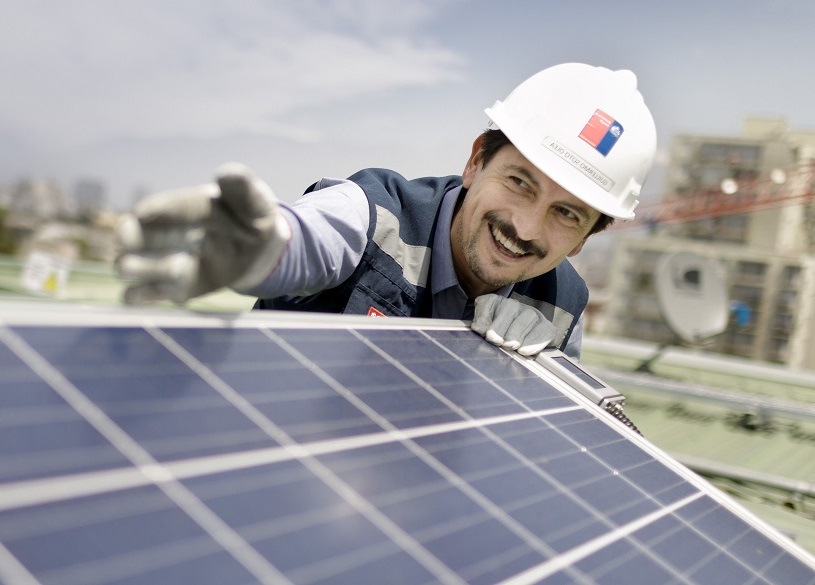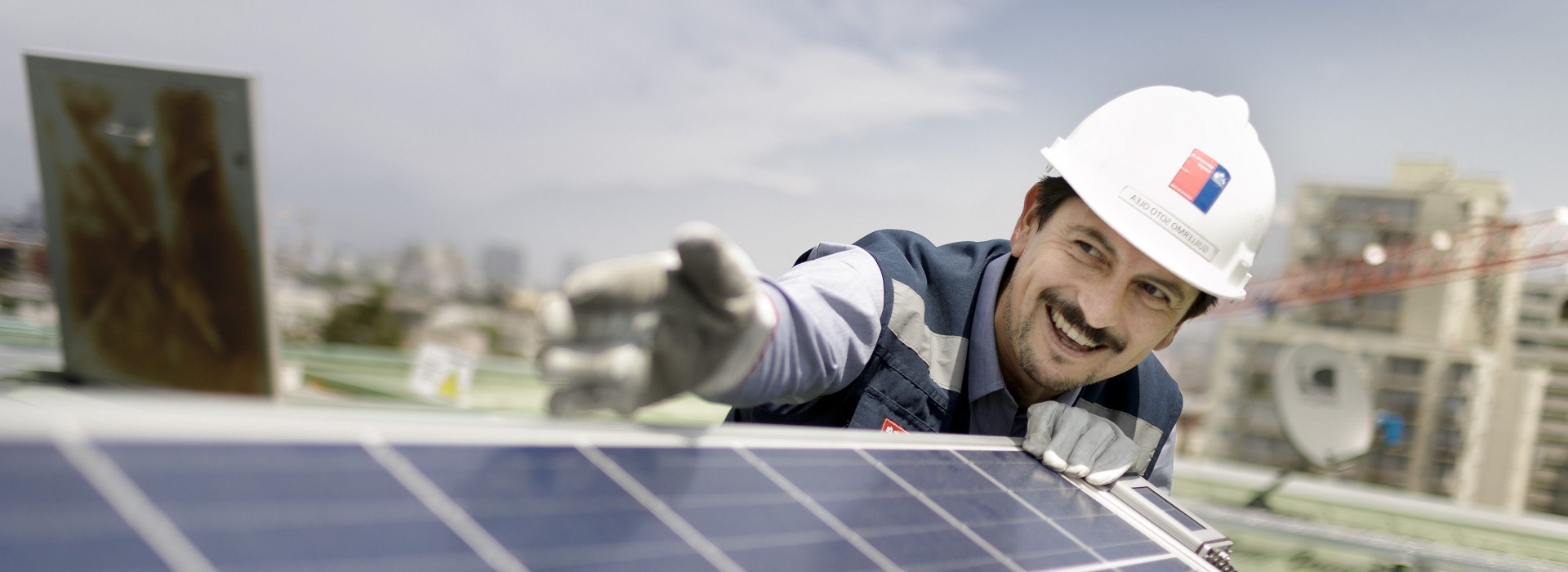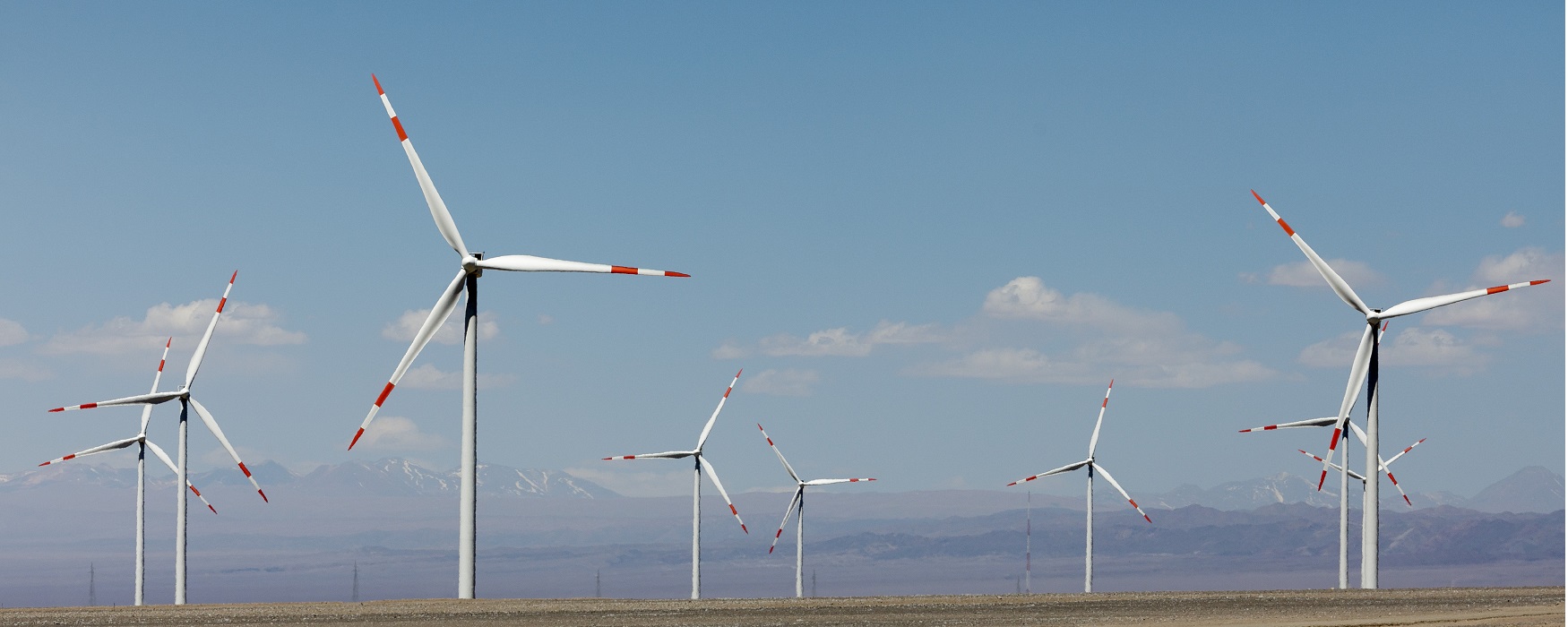

Environment and climate change: Bright prospects for clean energy
By increasingly using renewable energies and reducing emissions, Chile is helping protect the climate.
Sun-drenched Chile understands how it can switch from being a consumer of coal and gas to a producer of renewable energy. Solar and wind energy are booming and coal power plants are set to be phased out. With its more sustainable energy mix and fewer emissions, this Andean country is set to make a significant contribution to global efforts against climate change.
Chile’s economy is growing and so too is the country’s demand for energy, which now stands at roughly 6 per cent per year. This is mainly due to energy-intensive copper mining in response to the huge spike in global demand: the South American country happens to have the world’s largest copper reserves. Until now, Chile has generated more than 60 per cent of its electricity from – largely imported – fossil fuels (40 per cent coal), putting it among the countries with the highest energy costs in South America.
By switching to renewable energy and using energy-efficient technology, the Government of Chile seeks not only to make industry more competitive and to contribute to protect the climate. It also aims to reduce CO2 emissions by around one-third through to 2030 compared with 2007. The Deutsche Gesellschaft für Internationale Zusammenarbeit (GIZ) GmbH is supporting the Andean country in achieving these environmental and climate-related targets.

A paradise for renewable energy
Commissioned by the German Federal Ministry for the Environment, Nature Conservation and Nuclear Safety (BMU), GIZ and Chile’s Ministry of Energy calculated the country’s potential in terms of wind, solar and hydropower. Their conservative estimate puts it at over 1,900 gigawatts (GW) – ten times the installed power capacity in Germany. In a nutshell, ‘Chile is a paradise for renewable energy,’ says GIZ’s Rainer Schröer, who manages the energy programme on site in Chile. Made up of various individual projects, the programme is proving successful: Electricity produced by large photovoltaic (PV) plants has increased from less than 7 megawatts (MW) to more than 2,400 MW within five years. The power generated by wind farms increased from 335 MW to more than 1.700 MW.
Furthermore, under a public-private partnership with the German company Soventix GmbH, the programme has set up the first solar investment fund for financing relatively small PV plants. The fund has helped identify domestic and German medium-sized project developers and investors currently working on 25 PV plants with a total capacity of just under 80 MW. There are also plans to systematically harness solar power on top of public buildings, with over 110 solar power plants having been installed within a three-year period.

Germany and Chile share their knowledge
The key to wide-scale use of solar power consists in having adequate numbers of skilled professionals. GIZ has equipped six solar laboratories across the country that have since trained over 1,200 technicians. The federal enterprise also regularly organises trips to Germany for Chilean delegations for training purposes. Also with GIZ support, the University of Antofagasta, is setting up a training centre offering basic and further upskilling in concentrated solar power technology and large PV field plants.
In January 2018, the Chilean government and the operators of Chile’s 27 coal power plants agreed to phase out coal power generation. In June 2018, a commission was formed to transition away from coal power generation. GIZ is a permanent member of this commission and has already contributed basis analyses. Furthermore a study was conducted on potential alternative usage for the decommissioned power plants.
All in all, with the support of the BMU-funded activities, Chile has increased the percentage share of power generated by the sun and wind from 5 per cent to 20 per cent since 2014. It has also reduced energy costs and enhanced energy supply security. Between 2007 and 2016, the South American country saved more than 20 million tonnes of CO2 by expanding renewable energy. However, it is ultimately not just Chile that is benefiting from the growing and innovative use of renewable energy sources. ‘If we avoid emissions, we protect the climate worldwide,’ says Rainer Schröer.
Last update: June 2019